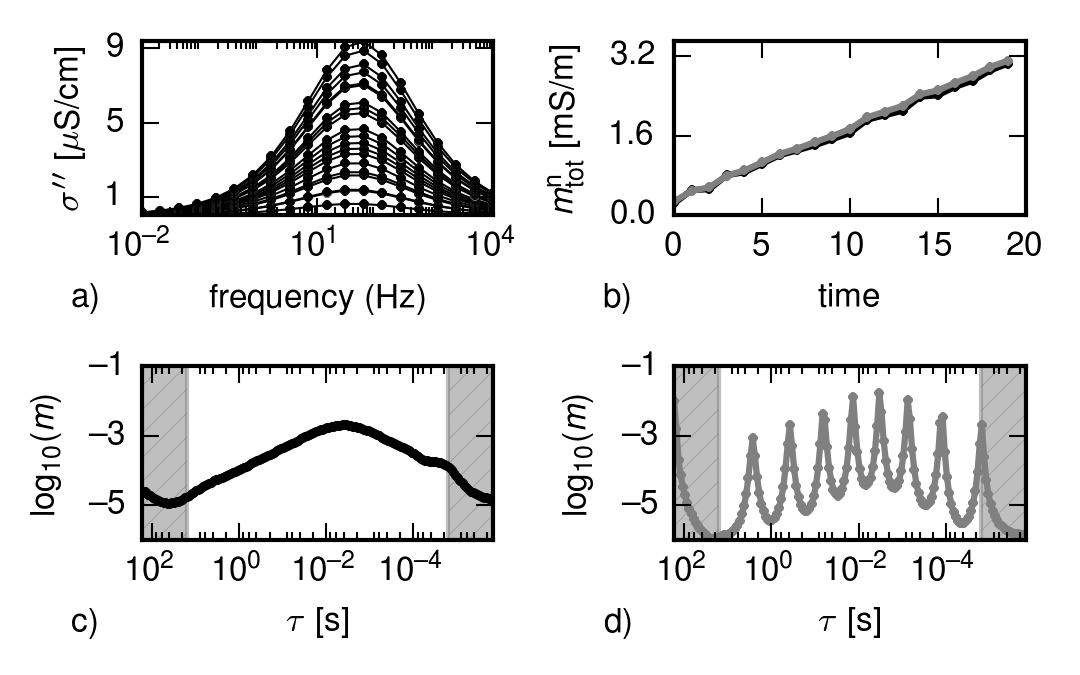ccd_time¶
Command line options¶
This module is deprecated and not used any more!!!!
Usage: ccd_time [options]
Options:
-h, --help show this help message and exit
-d FILE, --data_file=FILE
data file (default: data.dat)
--fmax=FLOAT Ignore frequencies above this value (default: None)
--fmin=FLOAT Ignore frequencies below this value (default: None)
--data_format=FORMAT Input data format, possible values are: rmag_rpha,
lnrmag_rpha, log10rmag_rpha, rmag_rpha, rre_rim
rre_rmim, cmag_cpha, cre_cim, cre_cmim. "r" stands for
resistance/resistivity, and "c" stands for
conductance/conductivity (default: rmag_rpha)
--data_weighting=SCHEME
Data weighting scheme to use. (default: re_vs_im)
--lam0=FLOAT Initial lambda for f-regularization (default: None)
--f_lambda=FLOAT Use a fixed lambda for the tau regularization
(default: None)
-f FILE, --frequency_file=FILE
Frequency file (default: frequencies.dat)
--ignore=STRING Frequency ids to ignore, example:12,13,14. Starts with
index 0. (default: None)
--ind_lams Use individual lambdas for f-regularization (default:
False)
--max_it=INT Maximum number of iterations (default: 20)
--norm=FLOAT Normalize lowest frequency real part to this value
(default: None)
-n INT, --nr_terms=INT
Number of polarization terms per frequency decade
(default: 20)
-o DIR, --output=DIR Output directory (default: results)
--output_format=STRING
Output format(ascii| ascii_audit) (default:
ascii_audit)
-i, --plot_its Plot spectra of each iteration (default: False)
--plot_lcurve=INT Plot the l-curve for a selected iteration. WARNING:
This only plots the l-curve and does not use it in the
inversion process. Use -1 for last iteration.
(default: None)
--plot_reg_strength Plot regularization strengths of final iterations
(default: False)
-p, --plot Plot final iterations (default: False)
--silent Do not plot any logs to STDOUT (default: False)
--tausel=STRATEGY Tau selection strategy: data: Use data frequency
limits for tau selection data_ext (default): Extend
tau ranges by one frequency decade compared to the
'data' strategy. Factors can be set for the low and
high frequency by separating with a ',': LEFT,RIGHT,
e.g. '10,100' (default: data_ext)
--tm_i_lambda=FLOAT Fixed time regularization lambda for chargeabilities
m_i (default: 0)
--trho0_lambda=FLOAT Fixed time regularization lambda for rho0 (default: 0)
--tw_mi Use time-weighting (only in combination with
--tmi_first_order) (default: False)
--tw_rho0 Use time-weighting (only in combination with
--trho0_first_order) (default: False)
--times=FILE Time index file (default: times.dat)
--tmi_first_order Use first order smoothing for m_i (instead of second
order smoothing) (default: False)
--trho0_first_order Use first order smoothing for rho_0 (instead of second
order smoothing) (default: False)
--tmp Create the output in a temporary directory and later
move it later to its destination (default: False)
-v, --version Print version information (default: False)
Regularisation Parameters¶

The selection of appropriate regularisation parameter values is a non-trivial
task for ill-posed inverse problems. In the present case this particularly
holds for the time regularisation, which competes with the frequency
regularisation. The figure shows an example which highlights the importance of
appropriately balancing frequency and time regularisations. Unimodal SIP
responses were generated using the Cole-Cole model with increasing
chargeability over time (a). Based on these data, DDs were performed using two
different time regularisations: one characterised by reasonably balanced time
and frequency regularisation parameters, and one where time regularisation was
dominant. The resulting temporal evolution of  for both cases
is shown in (b) and the corresponding RTDs for time step 10 are shown in c and
d, respectively. Although the temporal evolution of
for both cases
is shown in (b) and the corresponding RTDs for time step 10 are shown in c and
d, respectively. Although the temporal evolution of  is very
similar in both cases, a too strong time regularisation effectively neutralises
the frequency regularisation and leads to a highly fluctuating RTD (c).
is very
similar in both cases, a too strong time regularisation effectively neutralises
the frequency regularisation and leads to a highly fluctuating RTD (c).
(figure taken from src/dd_single/characterisation/TooMuchTimeReg).